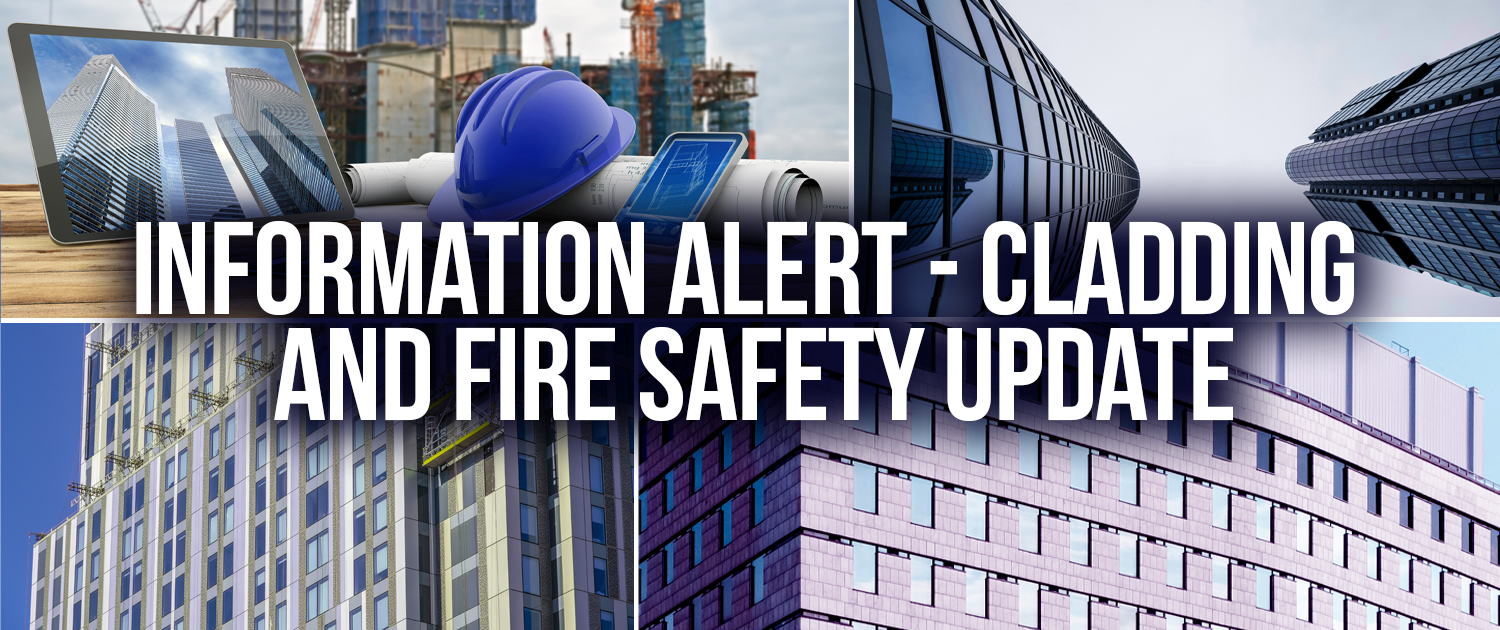Griffiths & Armour were pleased to hear of the UK Government’s announcement earlier this week, which promised to both increase the funds available to remove unsafe cladding and offer those professionals completing the EWS1 form a Government backed solution in respect of their work.
Over the last year, we have worked closely with officials and Ministers from the Ministry of Housing, Communities & Local Government (MHCLG), along with our colleagues from the British Insurance Brokers’ Association, to bring in particular the issues with the EWS1 form firmly under the spotlight and assist Government with identifying potential solutions.
.
The Announcement – Key Elements for Leaseholders:
Looking first at the announcement on the additional money; in essence, an additional new fund worth up to £3.5bn to address unsafe cladding will sit in line with the £1.6bn already made available from March 2020. The Housing Secretary, Robert Jenrick’s, statement to MPs yesterday announced that the Government measures will include:
- Grants to leaseholders of flats in buildings over 18 metres in England to remove unsafe cladding.
- A scheme of new long-term, low-interest loans for leaseholders in buildings with dangerous cladding between 11 metres and 18 metres. Under the scheme maximum repayments for leaseholders will be £50 a month.
- A new levy on developers when they seek planning permission to build high-rise buildings.
- A separate tax will be introduced from next year on money made in UK residential property development. The Government aim to raise £2bn over the next decade. This is intended to cover the cost of the grants; help pay for cladding remediation and “to ensure developers play their part” in addressing historical issues.
The announcement of the additional fund is a positive development for leaseholders, with commentators suggesting they were looking at individual potential costs in the worst case of more than £100,000.
.
The Announcement – Ongoing Considerations for Consultants:
Whilst the announcement is welcome news for leaseholders, its impact on those professionals with an involvement in those affected projects and required remediation schemes remains unclear.
We highlighted last year that one of the requirements of the monies already made available was that no stone should be left unturned in ensuring any parties responsible for any failings should be pursued. In turn, this was contributing to PI insurers wariness. Not only was there a clear signal that any potential legal liability attaching for work done should be pursued, insurers were concerned about the likely substantial investigation and defence costs that would be required when facing such a systemic exposure. It is too easy to conclude that this is only the right and proper approach.
In some circumstances – perhaps most circumstances – it will be the case that one individual is not responsible for any failings. Because of the onerous contractual environment which operates in UK construction, there may be potential for a legal liability to attach to parties against whom no ‘moral’ responsibility would lie.
As many of our clients will know, it is all too common for ‘indemnities’ and other onerous contractual provisions to be included in contracts over which they have little control. They are frequently faced with claims for which their only ‘responsibility’ is an abstruse provision in their contract buried within a hundred or more page of conditions. Similarly, their only fault may be that they are the last party ‘standing’… and insured, trapped by the broad principles of ‘joint and several liability’ which could result in them being wholly liable for the primary responsibilities of their insolvent counterparts, whilst only responsible for but a fraction of the overall costs.
If it remains that a condition of the fund is that full recovery is required, then our construction clients may well require to continue approaching the work with considerable caution. That caution ought to extend to demanding appropriate and reasonable limitations on liability and contract terms which share responsibility and liability equitably between the various parties.
.
EWS1 – Some particular features:
Picking up again on EWS1, Griffiths & Armour warned last year that the EWS1 form was a document that created considerable issues for those insurers still offering Professional Indemnity insurance to construction professionals in this area.
Government’s announcement yesterday brings with it a glimmer of hope for those professionals who have been anxious to assist those trying to sell their homes by potentially removing the insurance obstacles to that work. That they have decided to investigate the most radical option for intervention put forward, a Government backed indemnity, emphasises the seriousness of the issues.
.
Next Stage: Some imminent and potentially significant developments:
However, as is ever the case, we will need to see the detail of any such Scheme to establish if and to what extent past, present and future liabilities are insured or ‘indemnified’ by any Government product.
There will be much detail to work through in the weeks ahead on both of these narrow but critically important issues and the much broader implications of the Building Safety Bill, which is making its way through Parliamentary scrutiny.
As regular readers will know, the issue of ‘fire safety’ in the built environment is an issue very close to our hearts. The cross-industry drive from Government, the BSI, Regulators and the insurance industry must succeed in delivering a future where quality is prioritised over cost, lives are prioritised over profit and the construction professions are valued for their skill, experience and professionalism over their perceived ability to absorb disproportionate risk. Our views on this are consistent and clear:
The risks associated with fire engineering are beyond the appetite and capacity of the insurance market and the cost to transfer these risks in a traditional insurance context are simply not economic.
The risks that the property and construction market are trying to transfer to the construction professionals are enormous and out of proportion to their ability to accept, manage and insure them. A better legal environment needs to be created for professionals in this space to allow them to do safety critical work without fear of the withdrawal, or significant reduction of, their insurance protection.
There is a Government need to intervene to provide ‘insurance’ to maintain the current modus operandi of construction far more generally and/or create structural change to the roles and responsibilities and liability regime to allow the industry to operate efficiently and without undue impediment.
Whilst we seem to have made progress on the narrow issue of the EWS1 form, there is still much further to go on the bigger problem of insuring fire safety in the built environment. We continue to advocate and work with like-minded institutions and trade bodies for a much broader intervention from Government in this space.
We will report further in the coming weeks on some of the significant risk and insurance issues that our clients, and the wider industry, will be required to assess and consider.
.
Griffiths & Armour
12 February 2021






